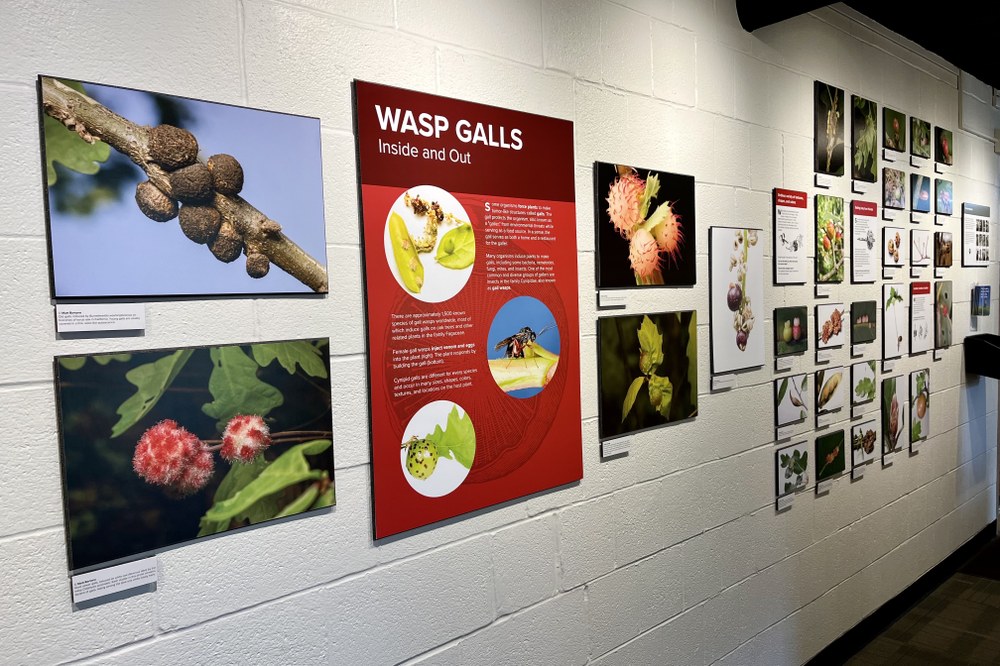Have you ever seen an unusual growth on a plant? Chances are it was a gall. This exhibit illustrates and describes the biology of Cynipidae, a family of wasps that is responsible for galls on many kinds of plants.

The exhibit illustrates and describes the biology of Cynipidae.
Galls are abnormal plant growths that are induced by plant parasites, for the benefit of the parasites. The gall protects the parasite, also known as a “galler,” from environmental threats, while also serving as food. In a sense, the gall serves as both a home and a restaurant for the galler.
Many organisms can induce plants to make galls, including some bacteria, nematodes, fungi, mites, and insects. One of the most common and diverse groups of gall-inducers are insects in the family Cynipidae, also known as gall wasps.
There are approximately 1,500 known species of gall wasps worldwide, most of which induce galls on oak trees and other related plants in the family Fagaceae. Female gall wasps inject venom and eggs into the plant, and the plant responds by building the gall.
Cynipid galls are different for every species, and occur in many sizes, shapes, colors, textures, and location on the host plant. In this exhibit you will find examples of different cynipid galls and learn about the roles they play in the larger insect community. You will also find examples of the internal structure and information about what goes on inside of a gall.
The Frost Entomological Museum
Hours: Monday-Friday 10am-4pm
The Frost Entomological Museum
Hours: Monday-Friday 10am-4pm

